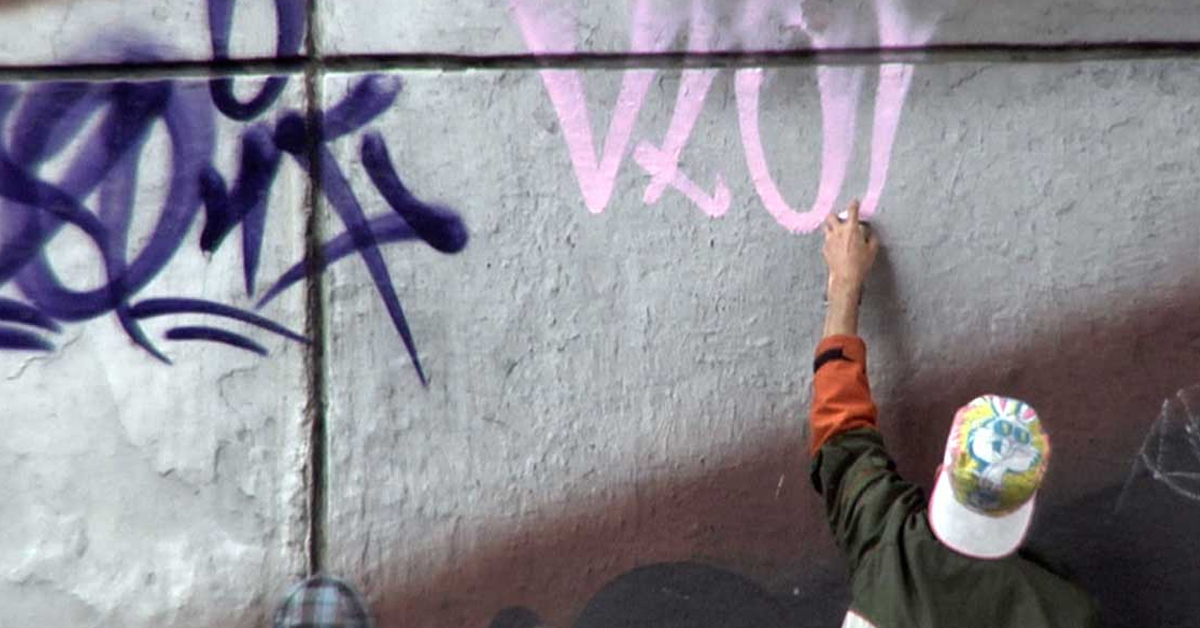
Mention graffiti to the majority of those over 50 years, and most think vandalism, unsocial behaviour. Messages or characters sprayed on someone else’s nice clean wall. Inflammatory phrases, sprayed on buildings, symbols of authority, and differing religious beliefs.
Mention the same to a younger age group and art is the usual answer. Different images are conjured up, brightly coloured carriages on the New York Metro system. Bare nondescript walls covered in cartoon characters, or a mosaic of bright colours and intricate shapes, adding interest for those who pass by.
And then of course there’s Banksy, famous English graffiti artist who has taken graffiti to a higher, more respectable level.
The definition of Graffiti, according to the Online Etymology Dictionary: from Italian graffiti, plural of graffito, “a scribbling,” a scratch or scribble,” from graffiare “to scribble.” From the Greek graphein “to scratch, draw, write.” In 1877 extended to include crude drawings and scribbling in public places.
Scribbles and images scratched in caves have been found the world over, yet there is still controversy as to why they were scratched onto rocks and in caves. Over the years archaeologists and scholars have voiced different reasons for these stick animals and hieroglyphics.
Some maintain the animals denoted what was available to be hunted; while others believe them to be just the doodling of adolescent males left behind, too young to join in the hunt. Stone-age vandalism, brought about by boredom.
The city of Pompeii was engulfed by ash from the erupting Mount Vesuvius nearly 2,000 years ago. Graffiti during this time seems to have moved forward in leaps and bounds. With the rediscovery of the city, all manner of graffiti has been found on walls and buildings, much of it similar to the graffiti which to this day adorns many older ladies and gents public toilets in the UK.
Sexual innuendo, ‘Fred was here,’ ‘Bill loves Mary,’ old friends meetings, and more in depth comments have all been found.
In Sri Lanka, the old capital and historical site of Sigiriya, dating back over 500CE, has frescoes of women thought to be in the king’s harem. The palace was abandoned after the king died. Turned into a monastery which subsequently failed, it reopened its doors to become a tourist attraction.
Over 1800 inscriptions are scratched into the walls including poetry, love declarations and the usual ‘I was here,’ from tourists who passed through the palace.
In virtually every corner of the world there are examples of how our ancestors have felt the need to let others know their thoughts. What they’ve done, or where they’ve been, and there’s no sign of that changing anytime soon.
There is no doubt that graffiti is a definite art form. From what 40 years ago would have been termed an underground culture, graffiti has grown into an accepted art form by all but its most die-hard opponents.
As there will always be, a tiny minority, known as ‘taggers’ won’t abide by the rules. They continue like the old graffiti artists of old. Spraying graffiti, ‘tagging’ a wall or building just to say they did it.
Luckily, graffiti removal has moved on from the soap, water, and hard scrubbing of yesteryear. Today’s modern companies have specialist chemical graffiti removers which, in conjunction with turbo jet washing, are designed to remove all forms of unwanted graffiti from a range of different surfaces such as aluminium and metalwork, stonework and brickwork.
Railway stations, bridges, hotels, schools and even domestic homes, can be given a new lease of life. Graffiti removed, along with years of grime and air-pollution, returns these grand old buildings and structures to their former glory.
Councils can’t make up their minds which side of the fence to be on. Hackney council takes a no-nonsense approach, whiting out any graffiti almost as fast as it arrives. A piece by Banksy received the same treatment as the rest within 24 hours of being discovered. In 2010 there was a civil action brewing with the council trying to get a cafe owner to remove a 12 ft high rabbit she commissioned on the side wall of her cafe.
Brighton council on the other hand, engaged a local graffiti artist to hand-paint the council’s new seatbelt campaign logo in 10 different locations around the city. Not only did it meet with resounding success, but the council noticed a marked reduction in tagging. Maybe, even in the world of spray paint and stencils, there is a structure of hierarchy which is adhered to by all.